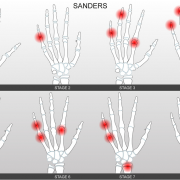Natural History of Scoliosis: the development of a predictive model
There are two abstracts on the natural history of scoliosis that Isico is going to present at the 56th SRS conference scheduled for next September in the United States: “Predicting Future Curve Severity for Juvenile Idiopathic Scoliosis: A Natural History Study” and “Predicting Future Curve Severity Requires Different Models for Adolescent and Juvenile Idiopathic Scoliosis “.
Abstracts which constitute research carried out by Isico in collaboration with the Canadian University of Alberta and Dr Erik Parent. The preliminary results of this research study will be presented by Prof Stefano Negrini at the Research Grant Outcome Symposium organized by SRS and scheduled for March 6 from 9 to 11 ET US.
Most models to predict future Scoliosis severity have not been validated; many previous samples included treated patients limiting our understanding of the natural history.
“Our aim was to predict future curve severity at a time point of the clinician’s choice during adolescence using data from x-rays obtained before starting treatment in patients with a diagnosis of Juvenile Idiopathic Scoliosis (JIS) – explains dr Sabrina Donzelli, one of the authors of this research study – we included 2331 patients with a diagnosis of JIS, under age 26, previously untreated.
The data obtained through the radiographs confirm the factors involved in the severity of scoliosis: for juvenile scoliosis the age at onset and the extent of the curve, and for adolescent scoliosis the Risser stage and female gender. The idea is to optimize the use of this data for clinical purposes “.
That is, to be able to validate the model to verify whether it works for another population with similar characteristics. “During the webinar to which I have been invited – says Prof. Negrini – I will present the preliminary data not only of the two abstracts but also of the other analyses developed by the Canadian university. As a team, we are continuing to validate one model with which we can create an algorithm to predict the cases with the highest development risk.”










